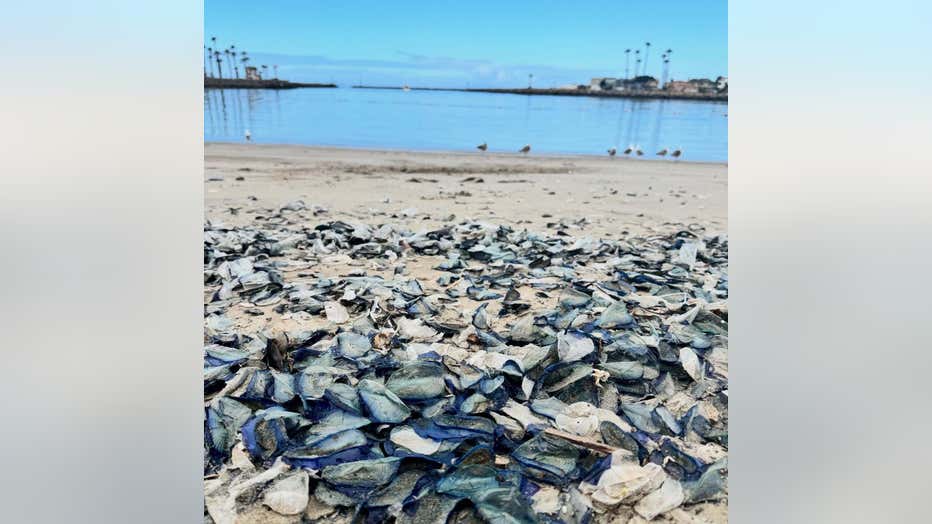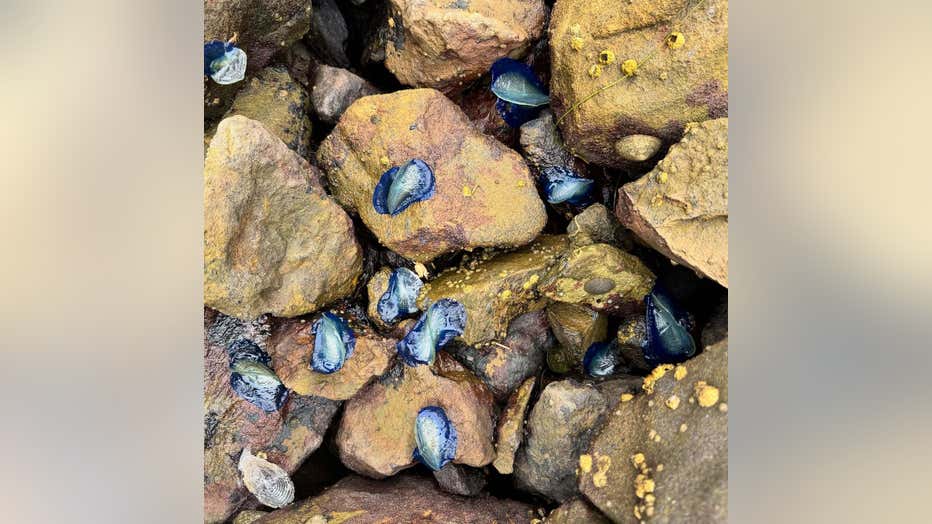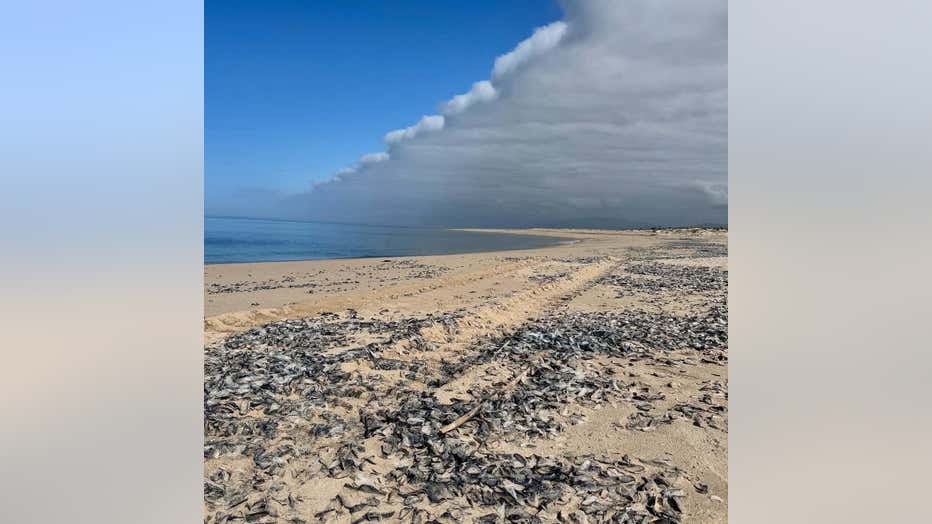Thousands of Velella velella wash ashore Ventura County beaches
PREVIOUS COVERAGE: What to know about 'by-the-wind sailors'
Hoards of the jellyfish have been washing up on California beaches. Nate Jaros with Aquarium of the Pacific explains why this is happening.
VENTURA COUNTY, Calif. - It's that time of year again!
If you've visited one of the beaches along California's coast recently, you may have noticed some strange little blue creatures washed ashore.
While they may closely resemble the poisonous Portugese Man O'War, these little creatures are not poisonous and aren't even jellyfish. They're known as Velella velella - or By-the-Wind-Sailors.

Photo courtesy Channel Islands Harbor
Thousands have washed ashore beaches in Ventura County, including Silver Strand, Kiddie, and Hollywood beaches, as well as the Channel Islands Harbor.
According to the Point Reyes National Seashore, these hydroid polyps - cousins of the jellyfish - are actually pretty common. They live in the open ocean but make their way onto beaches in the spring and early summer months when strong winds push them ashore.

Photo courtesy Channel Islands Harbor
They're described as flat, oval-shaped creatures, bluish to purple in color and three to four inches long, according to the National Park Service. Its two-inch trianguilar "sail" is attached at its base, diagonally. Velella has numerous blue tentacles dangling from its body, which contain stinging cells that help capture its food. Its stinging cells are rarely harmful to humans, officials said, in comparison to the Portugese Man O'War.
By-the-wind sailors use their blue stinging tentacles to capture prey, such as plankton. While these seafarers don’t have many known predators, they are eaten by nudibranchs and purple sea snails.

Photo courtesy Channel Islands Harbor
Velella don't actively navigate using their sail, but rather go where the winds take them.
"When the sail caches the wind, the Velella will be blown downwind at an angle to the wind," the NPS said. "This sets Velella apart from many other jellyfish, which drift with the ocean currents."
"When the prevailing winds shift, such as during a storm, the Velella are driven towards the coast, where they often are stranded on beaches in great numbers. As the Velella dries out on the beach, it becomes brittle and transparent, looking like a cellophane candy wrapper."

Photo courtesy Channel Islands Harbor
It's been about a year since we've seen Velella velella wash ashore.
PREVIOUS COVERAGE: Velella velella, By the Wind Sailors return to California beaches
Research suggests that these "washups" are associated with warmer ocean temperatures in the northern California current.
Officials say, Velella velellas pose little threat to humans, but if you do decide to pick one up, be careful when touching your face and eyes afterward because they can cause slight irritation to your skin.

Photo courtesy Channel Islands Harbor
The Source: Information for this story is from the Channel Islands Harbor, National Park Service, and Point Reyes National Seashore.

